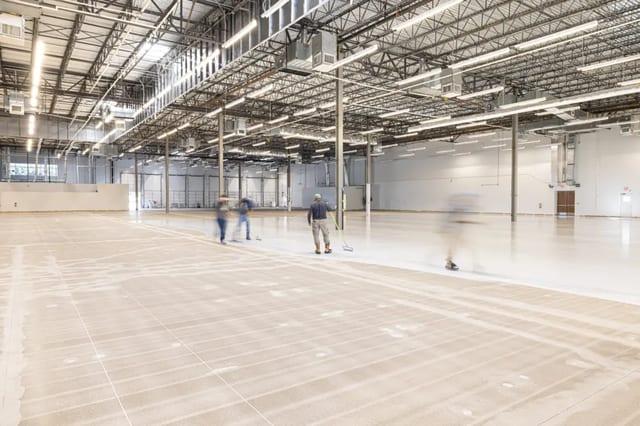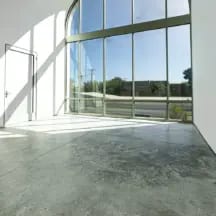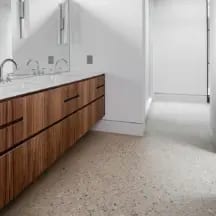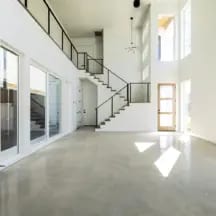Slip Resistance in Polished Concrete Floors: Key Factors for Safety
When people think of polished concrete floors, they generally consider their durability and modern aesthetics. However, our customers are often surprised to learn that they also offer unparalleled slip resistance. This might seem counter-intuitive, as high reflectivity is often associated with slipperiness.
In fact, many big-box retailers specifically choose polished concrete flooring to significantly reduce slip-and-fall liability. These floors excel in both residential and retail settings—even in restaurants, where aerosolized grease can deposit onto surfaces, increasing slip risks. Keep reading to learn about how slippery polished concrete is when wet, and discover tips for further enhancing your floor’s slip resistance.
Our team includes well-known veterans of the concrete industry with extensive experience in installation, materials manufacturing, and product development. As a testament to our expertise, we are proud to be a manufacturer-certified installer for renowned concrete brands such as MAPEI and Westcoat.
At Craftsman Concrete Floors, our commitment is to environmental sustainability. We know that our customers install concrete flooring to minimize waste and environmental impact. To support this commitment, we power our facilities with 100% renewable energy, use electric cars where possible, and purchase carbon credits to offset the greenhouse gases from our other vehicles.
Why Aren’t Polished Concrete Floors Slippery?
EASY TO KEEP CLEAN
Clean floors are up to 20 times less slippery than floors with contaminants on their surface.
Polished concrete is extremely easy to keep clean! Because of their uniform surface, robot vacuums and microfiber mops are all that’s needed to clean residential polished concrete floors.
For commercial applications, walk-behind or ride-on floor scrubbers are generally recommended because they can clean large areas very quickly.
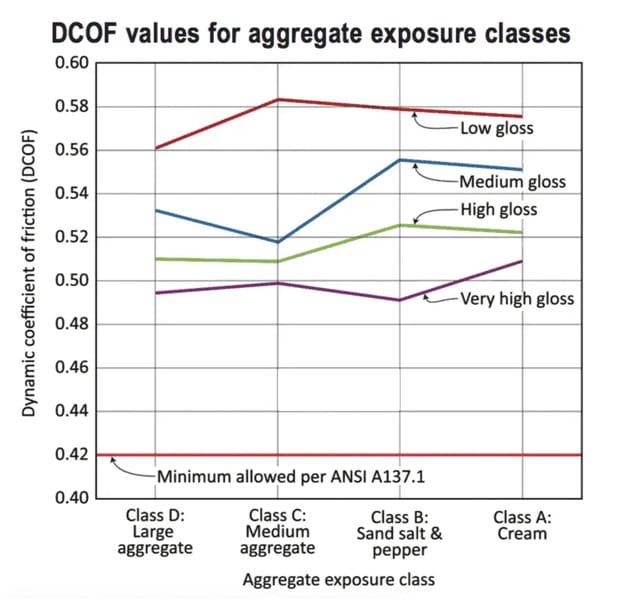
HIGH COEFFICIENT OF FRICTION
Because of their high coefficient of friction, polished concrete floors are 20% to 50% more slip-resistant than the national standard for a low slip floor.
In physics, the coefficient of friction measures the resistance of motion between two surfaces relative to the force (gravity) holding the two surfaces together. This is measured as a number between 0 and 1, where larger numbers indicate more slip resistance.
While this might sound pretty technical, what’s important to note is that the national standard for a non-slip floor is .42. In other words, on a non-slip floor, at least 42% of one’s weight must be converted into grip between your shoes and the floor.
As you can see on the chart below, the coefficient of friction for polished concrete floors is between .49 and .59 depending on the details of the installation. This is the reason why polished concrete floors are incredibly safe, whether in a residential, retail, or industrial installation.
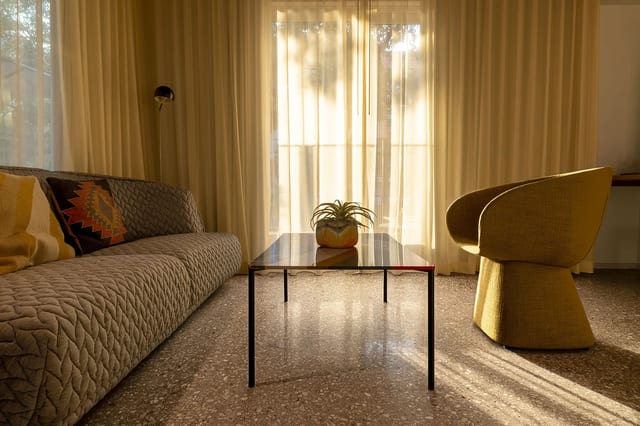
SAFER FLOORS FOR RETAIL AND RESIDENTIAL
America’s largest installers of polished concrete floors, such as Home Depot and Costco, use our installation method specifically because of its high slip resistance. In the United States, slip-related injury lawsuits cost businesses more than 80 billion dollars a year.
Even when wet, polished concrete floors offer significantly higher slip resistance than tile or wood floors. When installed properly, polished concrete flooring reduces slip-and-fall liabilities and insurance costs for business owners. They also provide a stylish and durable solution that withstands heavy foot traffic in busy retail spaces. Additionally, homeowners appreciate polished concrete floors for their ease of maintenance, aesthetics, and enhanced safety.
Residential Polished Concrete Floors
So far, we’ve primarily discussed commercial concrete flooring and the national standards governing these installations. However, when it comes to residential applications, even the most highly polished concrete floors offer excellent slip resistance—often surprising homeowners with their secure, grippy feel, even when wet!
Because polished concrete floors perform well in residential environments, aesthetics can comfortably drive your choice of finish, allowing homeowners to prioritize design without compromising safety.
How can I Make my Polished Concrete Less Slippery?
In high slip-hazard spaces such as locker rooms, public bathrooms, and business entryways, it’s vital to do everything possible to maximize your concrete floor’s grip. Here are a few tips:
- ROUTINE CLEANING
Government tests show that clean concrete floors are nearly 20 times less likely to cause slip and fall accidents and injuries than dirty floors.
For step-by-step instructions, see our polished concrete floor cleaner guide. - ABSORPTIVE RUGS
Even in a very high traffic area, there is no need to use rubber mats. However, absorptive rugs can dramatically reduce slip incidents in indoor spaces prone to standing water. - ANTI-SLIP CONDITIONERS FOR POLISHED CONCRETE
Mop on an anti-slip grip additive such as SlipDoctors Polish Grip. There’s no quicker or easier solution than a slip-resistant coating to make wet surfaces safer. - NON-SKID ADDITIVES
Apply a concrete sealer with glass beads or sand for added grip. These finishes offer tons of grip for the most demanding installations such as restaurant kitchens or veterinary offices.
Blog
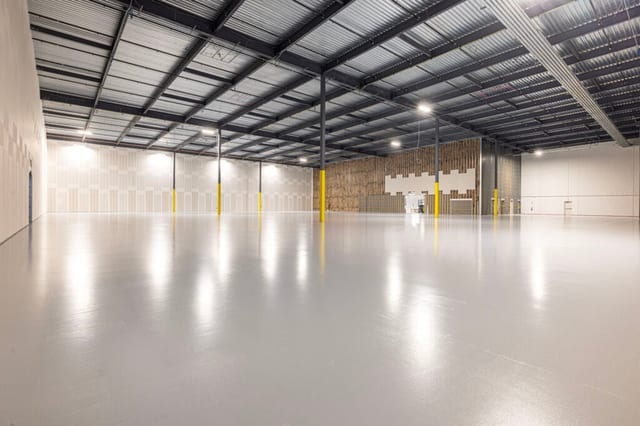
34,000 Sq. Ft. ESD Epoxy Installation in Dallas, Texas
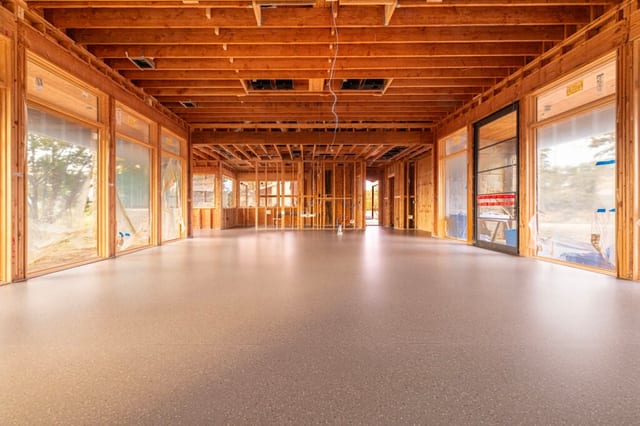
Residential Terrazzo Floors in Fort Worth, Texas
